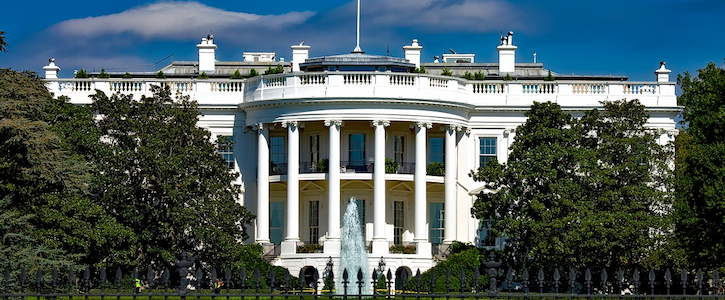Price Transparency Executive Order Might Not Hit the Right Notes
David Harlow, J.D., MPH argues that cost data alone won’t help consumers.

The recent healthcare price transparency executive order (E.O. 13877, issued June 24, 2019) has caused quite a stir, even as the final text seems to be a watered-down version of what was originally promised.
The executive order calls for regulations and reports and recommendations that will result in:
- Hospitals publicly posting charges and negotiated rates for shoppable services in a format that allows comparison shopping
- Providers and payers (including self-insured plans) disclosing out-of-pocket cost information before patients receive care
- Promoting competition by reporting on and addressing impediments to price transparency
There are additional pieces of the executive order that relate to quality reporting, sharing of federal data and some specific HSA, FSA and tax proposals.
The administration seems to be trying to get a jump on pending congressional activity in this realm and delivering some version of transparency. In the process, the administration is garnering support from some patient advocates and generating opposition by some associations representing payers and providers.
If you are experiencing a little déjà vu, that’s understandable; the idea of making price and quality data about “shoppable” healthcare services easily available to all is by no means new. Transparency, on its face, seems like it must be a good thing. Alas, nothing is that simple. The key issues, now as always, include at least two key categories of questions:
- Are the requirements legal? The principal issue here (assuming we get over the question of scope of executive authority and conflicts with existing law), is whether the requirements are anticompetitive or procompetitive. For example, will mandating the release of price data result in all prices for a given service rising to the level of the highest price for that service disclosed in any given market?
- Would compliance yield meaningful data to consumers, enabling informed decision-making about healthcare services and providers? In other words, will cost and quality measures be linked in a manner that is accessible to and understandable by typical consumers? Will the information be shared in a user-friendly format, through a user-friendly channel and in a user-friendly manner?

David Harlow, J.D., MPH
Since we have been talking about price transparency for ages, let’s consider what we have attempted to date, whether that has worked and what we might do in the future. By “we,” I mean not only the federal government or “The System” as a whole, but also individual healthcare providers and systems.
Let’s start with the obvious: Posting machine-readable chargemasters, as many hospitals did earlier this year in bare compliance with a new federal rule, is really not doing anybody any favors, least of all the hospitals. (As an example, see this story about the implementation of hospitals’ compliance with this new rule.) We should be able to do better at this stage of the game in terms of hospital price transparency.
Some health plans and hospitals make price estimator tools available online. The best of them are pretty darn impressive and can take into account the specific service in question, the related services that are likely to be added in to the total experience, a patient’s particular health plan’s benefit structure and the health plan’s contract with the healthcare provider. It just works.
Unfortunately, such implementations seem to be few and far between (and they are not what the executive order would mandate, anyway).
More typical is the experience I had recently when I decided to try and figure out what my out-of-pocket cost would be for an upcoming routine colonoscopy — a shoppable procedure. My primary care (and most other care) is provided by a provider organization at risk — possibly at full risk — under its agreement with my health plan. Nevertheless, the provider organization did not offer useful information, and the price estimator tool on the health plan website did not even surface my provider organization as a potential provider of the service — even though I was logged in and the plan has access to all of my relevant information.
When I called the plan, I was quoted a very specific cost, which was about twice the cost listed on the website. (The amount was initially explained as being higher because it was a hospital price, even though my provider is not a hospital; the specific quote turned out to be an estimate based on average charges in the region, not based on any contract with my provider.) In the next breath, I was quoted an out-of-pocket cost of $0 if the service were coded as preventive. The provider organization and health plan are well-regarded and considered to be ahead of the curve in matters of cost and data and all that, but the information I received was effectively useless.
Under the executive order, I might fare better and get access to a specific charge and a specific out-of-pocket expense, but I might not have a great deal of confidence in the accuracy of the quote. Frankly, while the zeitgeist seems to favor price transparency, experience in the marketplace has shown that when price transparency has existed, few, if any, patients make use of it, even for shoppable services.
The Federal Trade Commission had occasion to opine on draft state transparency legislation about four years ago, and it essentially said that releasing payer-provider contract terms (as the executive order might be read to require) was a nonstarter, was anticompetitive. Specifically, the FTC noted in a blog post describing the policy perspective laid out in a formal letter to the State of Minnesota:
“We believe it is possible to give consumers the specific kinds of information they need to make better health care choices, while avoiding broad disclosures of bids, prices, costs, and other sensitive information that may chill competition among health care providers. Striking the right balance, and mitigating the risk of harm to the competitive process, requires careful fine-tuning of transparency laws and regulations. As with all things, details matter.”
States have been trying to get at this data on a local level for years, with mixed results. All-Payer Claims Databases (APCDs) collate data — but not from all payers, it turns out. About half of all states have APCDs, but the Supreme Court has exempted self-insured plans from their reporting requirements, meaning we lose access to data on about a third of the population. (For a taste of some legal esoterica and a sense of the implications, see my post on APCDs and ERISA preemption. Speaking of which, the portions of the executive order seeking to mandate actions by self-insured plans could face the same fate as the state law thrown out by the Supremes in the APCD case.)
Rather than worrying about how to challenge the legality of the executive order or questioning the effect of its implementation on markets, concerned healthcare provider organizations and health plans should be lobbying the administration to exercise its discretion within the considerable latitude of the language of the executive order and deliver a set of regulations that will be useful to the market and market participants (such as patients with high deductible health plans). Heck, forward-thinking organizations could take steps today to begin to implement the technology-enabled, consumer-friendly, accurate, plan-specific cost estimators described above. But the cost estimators are not entirely useful in a vacuum. If they are paired intelligently with quality data, having this information available to consumers is likely to be so much more useful than cost data alone.
David Harlow, J.D., MPH, is a healthcare attorney with deep experience in business, strategy, policy, compliance and proactive counseling in the healthcare industry, working with provider organizations and technology companies of all shapes and sizes. He is recognized as a thought leader in digital health, data privacy and the broader healthcare sphere. David has a deep passion for innovation, a preference for simplicity where feasible and a practical approach to crafting actionable solutions. Read David’s award-winning blog, HealthBlawg, and listen to his healthcare innovation podcast, Harlow On Healthcare. You should follow him on Twitter: @healthblawg.
Get the best insights in digital health directly to your inbox.
Related
Medicare Advantage Telehealth Rule Could Be Big for Health Systems
Value-Based Pricing Has a Patient Experience Problem
Medicare App Enables Patients to Check Coverage of Medical Services, Items